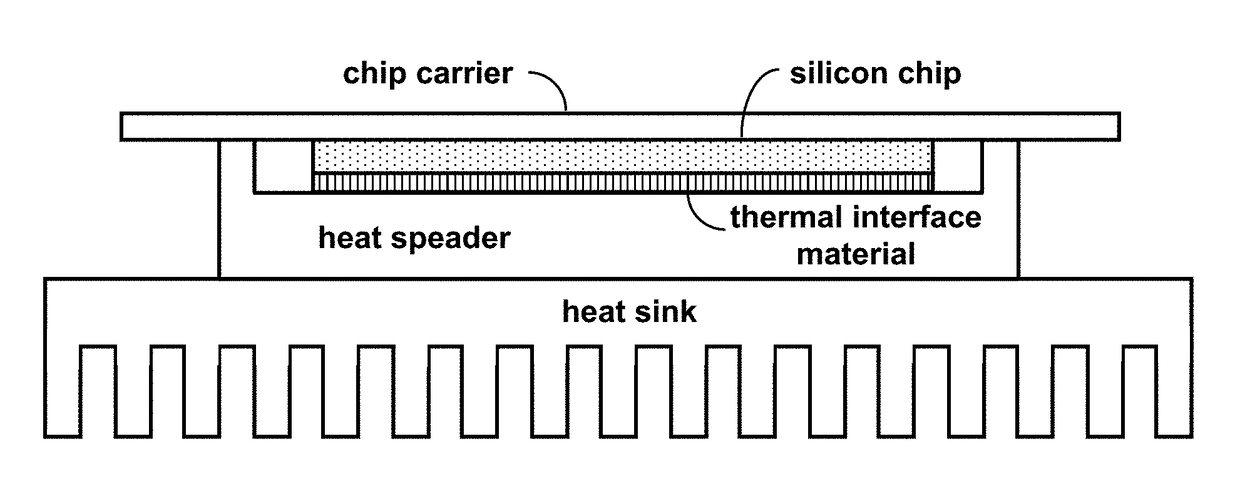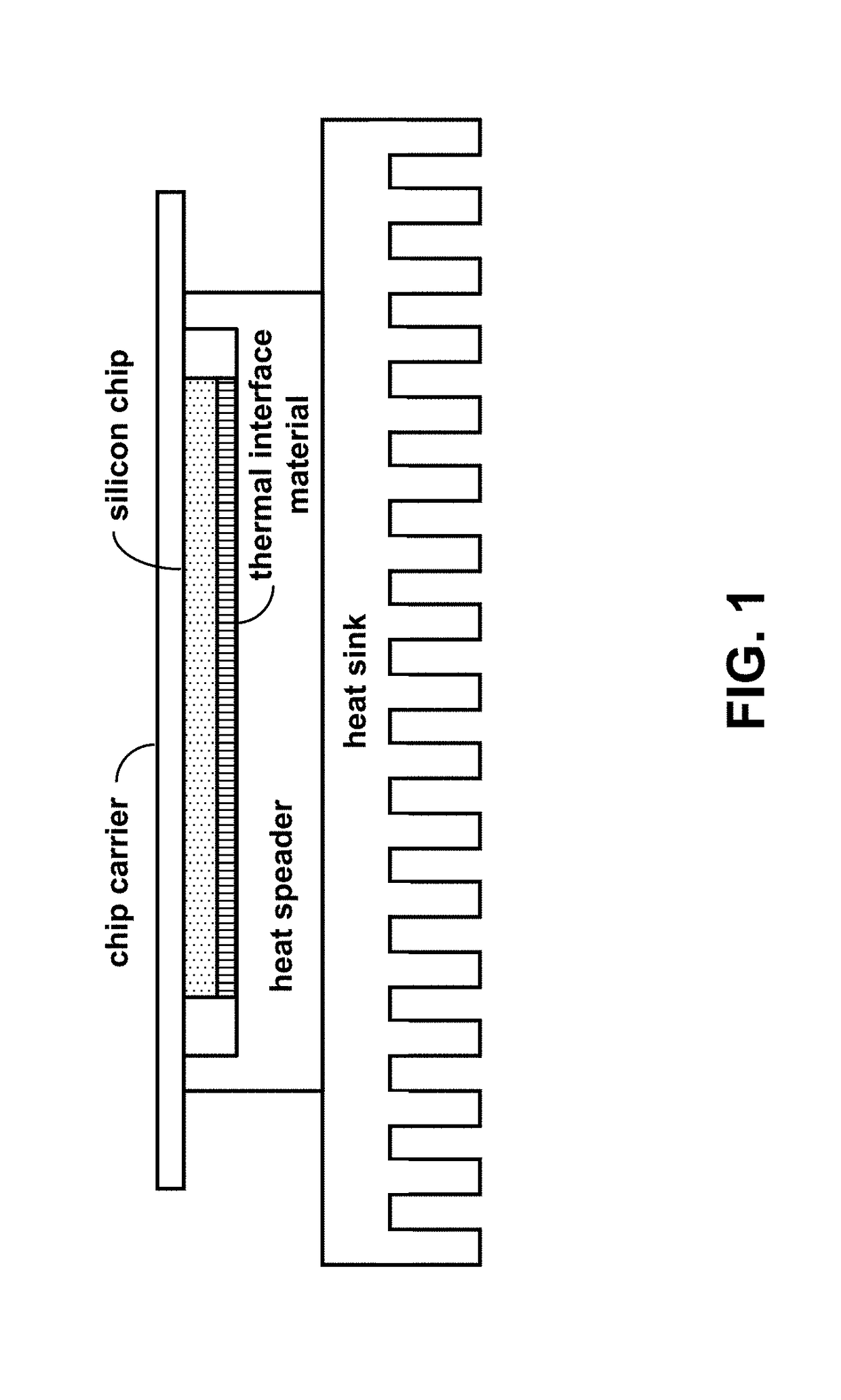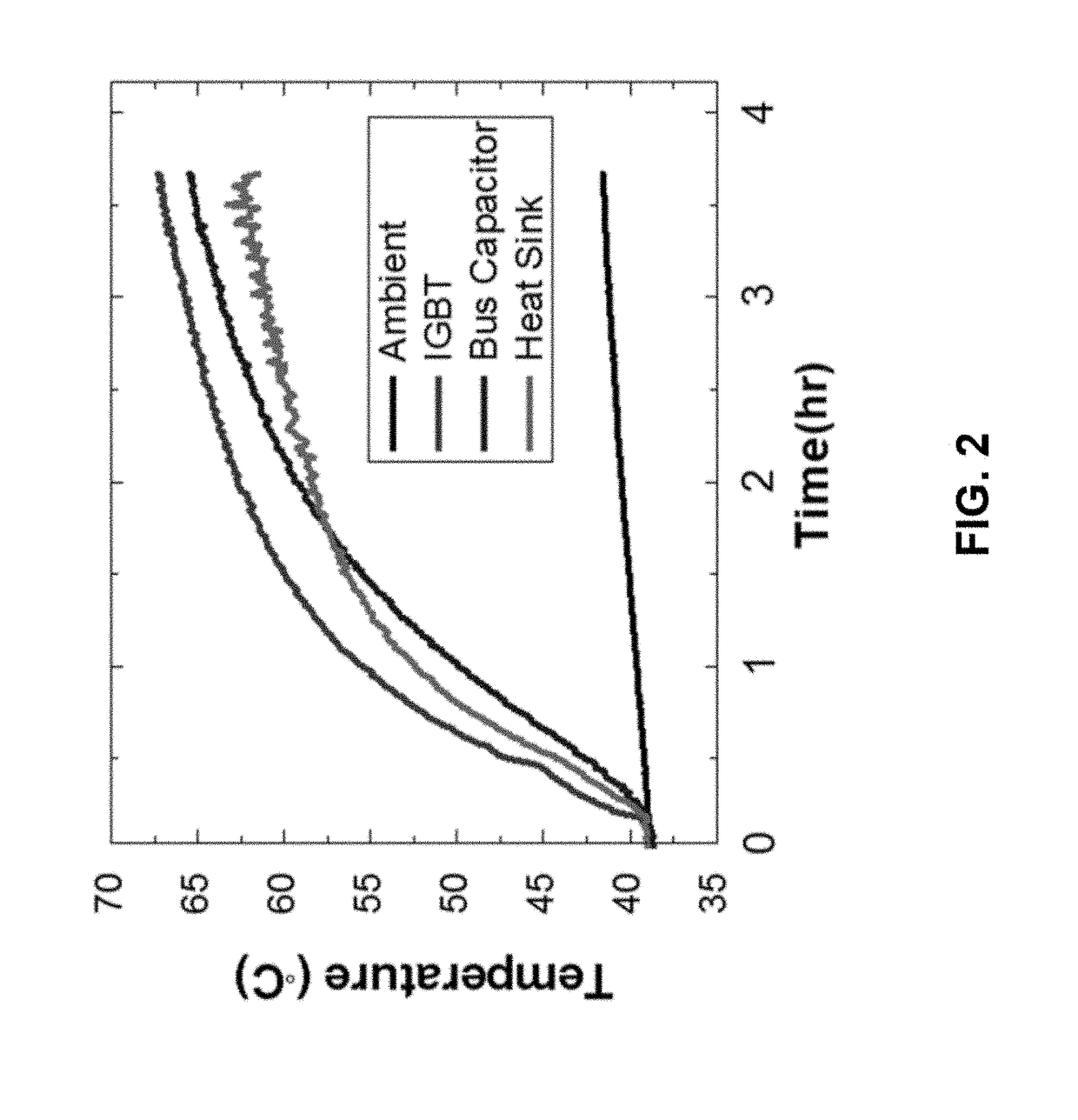Method for controlled growth of carbon nanotubes in a vertically aligned array
a carbon nanotube and vertical alignment technology, applied in the manufacture of electric discharge tubes/lamps, electrode systems, semiconductor/solid-state device details, etc., can solve the problems of increasing temperature rise and device failure rate, limiting device performance, and reducing the nucleation site so as to prevent the al surface from premature oxidation, reduce the density of carbon nanotubes, and control the effect of carbon nanotube nucleation sites
- Summary
- Abstract
- Description
- Claims
- Application Information
AI Technical Summary
Benefits of technology
Problems solved by technology
Method used
Image
Examples
Embodiment Construction
[0027]FIG. 4 shows an example of a carbon-nanotube-based TIM. The carbon-nanotube-based TIM has no epoxy in the thermal pathway, thereby enabling a high thermal conductivity and, therefore, high heat flux from a heat-generating device to a thermal spreader heat sink. FIG. 5 is a graph of the TIM thermal conductivity as a function of carbon nanotube (CNT) thermal conductivity for various contact areas. As can be seen, high quality CNTs can provide adequate TIM thermal conductivity, even with a low contact area. An optimal CNT-TIM preferably has no adhesives in the thermal pathway, a high CNT site density to increase the number of thermal pathways (i.e., no entanglement), planarized array tips to maximize thermal contacts to the hot device surface, and high-crystalline quality CNTs to provide a high thermal conductivity. As shown in FIG. 6, high density aligned arrays of CNTs can be grown using anodized aluminum oxide (AAO) nanopore templates on heat sink substrates (alternatively, ar...
PUM
| Property | Measurement | Unit |
|---|---|---|
| Diameter | aaaaa | aaaaa |
| Length | aaaaa | aaaaa |
| Electrical conductivity | aaaaa | aaaaa |
Abstract
Description
Claims
Application Information
 Login to View More
Login to View More - R&D
- Intellectual Property
- Life Sciences
- Materials
- Tech Scout
- Unparalleled Data Quality
- Higher Quality Content
- 60% Fewer Hallucinations
Browse by: Latest US Patents, China's latest patents, Technical Efficacy Thesaurus, Application Domain, Technology Topic, Popular Technical Reports.
© 2025 PatSnap. All rights reserved.Legal|Privacy policy|Modern Slavery Act Transparency Statement|Sitemap|About US| Contact US: help@patsnap.com



